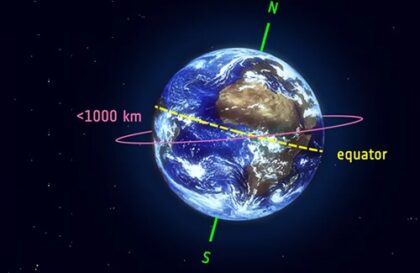Falcon 1: A Game Changer in Private Space Enterprises
The Falcon 1, developed by SpaceX, is a launch vehicle with a rocky start. The first three launches of Falcon 1 ended in accidents, but the fourth and fifth launches were completely successful. In September 2008, Falcon 1 became the first private liquid rocket to launch a payload into Earth orbit.
Credit: John Raoux / AP
The success of Falcon 1 in 2008 had a significant impact on private space ventures, establishing SpaceX as a leader in the industry. The development of Falcon 1 and its successful launch paved the way for developing other SpaceX rockets, including the Falcon 9 and Falcon Heavy.
Falcon 9 – a breakthrough in multiple launches and landings of a rocket that opened a new era of space accessibility
Credit: SpaceX
The Falcon 9 rocket, designed and manufactured by SpaceX, revolutionized spaceflight with its reusable design. This breakthrough in rocket technology enabled multiple successful first-stage launches and landings, lowering the cost of spaceflight and increasing the accessibility of space. In December 2015, the Falcon 9 Full Thrust version became the first launch vehicle to successfully launch the first reusable stage vertically into orbit.
In March 2017, the Falcon 9 first stage landed on a floating platform after launching a communications satellite into orbit. This successful landing demonstrated the viability of reusable rockets and marked a significant step forward in space technology development. The rocket launched various payloads into orbit, including communications satellites, scientific instruments, and cargo spacecraft. Falcon 9 has played a critical role in deploying SpaceX’s Starlink satellite constellation, which aims to bring global Internet access to underserved areas.
Falcon Heavy is the most powerful rocket in the world, capable of carrying large loads into low orbit and sending ships to the Moon and Mars.
Credit: SpaceX
Falcon Heavy’s unprecedented payload makes it the most powerful rocket in the world. With its ability to lift 64 tons into low Earth orbit and 19 tons into geostationary orbit, this advanced launch vehicle offers a wide range of payload options for different missions. For comparison, the heavy Delta-IV rocket, previously considered the most powerful, could lift only 27 tons of cargo into low Earth orbit.
One of the Falcon Heavy’s most notable strengths is its ability to support lunar missions and moon landings. On February 6, 2018, SpaceX launched a Falcon Heavy rocket, becoming the first successful rocket launch with a payload. This breakthrough has important implications for research.
Falcon Heavy’s potential for Mars exploration and colonization is another significant advantage. With its ability to deliver up to 16.8 tons of payload to Mars, the Falcon Heavy could go a long way toward establishing a human presence on the Red Planet. Falcon Heavy can even deliver up to 3.5 tons of payload to Pluto, demonstrating its versatility and potential for deep space exploration.
Starship is an ambitious project to colonize Mars and overcome interplanetary travel, which could change the future of space exploration.
Credit: SpaceX
The Starship project, also known as the Hundred-Year Starship, is an ambitious initiative whose primary goal is to colonize Mars by means of irreversible human flights to the planet. The project’s main idea is to send people to Mars without the intention of returning them to Earth, marking the beginning of a new era of space exploration and habitation.
According to SpaceX, the spacecraft can enter the Martian atmosphere at an incredible speed of 7.5 kilometers per second, slowing down aerodynamically for a controlled landing. The Starship/Superheavy complex is designed to be fully reusable, with both stages returning to Earth after launch and preparing for subsequent missions.
The consequences of the successful colonization of Mars by the Starship project are far-reaching and could significantly change the future of space exploration. Some critical aspects of this impact include:
– Expansion of human civilization beyond Earth, opening the way for further exploration and colonization of other celestial bodies.
– Development of advanced technologies and infrastructure needed to support human life on Mars, which can also be applied in future space efforts.
– Increased global interest and investment in space exploration, leading to more scientific research and discovery.
Credit: SpaceX
Elon Musk, the founder of SpaceX, predicts that the first human mission to Mars aboard the Starship spacecraft will occur by 2028. This groundbreaking mission could catalyze a new era of human exploration and expansion throughout space.
Banner image: Falcon 1 (left), Falcon Heavy (middle), and Starship (right). Credit: SpaceX
Image credit:
https://interestingengineering.com
https://www.nasaspaceflight.com
https://www.esa.int
https://newatlas.com
https://starship-spacex.fandom.com
https://twitter.com/elonmusksu






